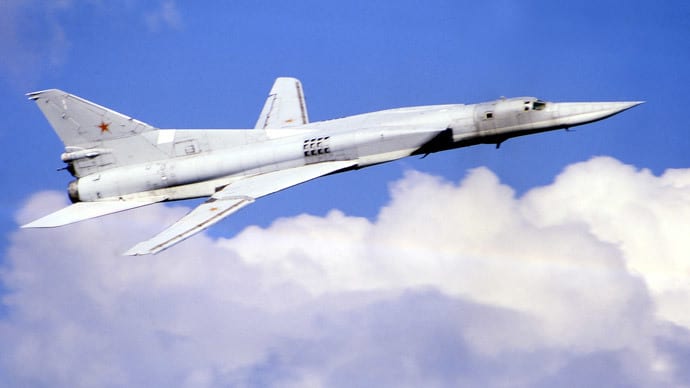AN UP CLOSE AND PERSONAL LOOK AT THE RUSSIAN FIREPOWER DEPLOYED IN SYRIA
![]()
//
 SOURCE: ZERO HEDGE | READERS BEWARE. Zero Hedge is a peculiar animal: part thoroughly establishmentarian, in fact a splinter from Wall Street in personnel and audience, and part irreverent and refreshingly truthful—with an insider’s vantage point of view. That being the case, it will inevitably carry the class bias observed in mainstream sites, and being [reputedly] manned by Wall Street alumni, more than a share of cynicism. Expect a “curse on both your houses” type of analysis. —PG
SOURCE: ZERO HEDGE | READERS BEWARE. Zero Hedge is a peculiar animal: part thoroughly establishmentarian, in fact a splinter from Wall Street in personnel and audience, and part irreverent and refreshingly truthful—with an insider’s vantage point of view. That being the case, it will inevitably carry the class bias observed in mainstream sites, and being [reputedly] manned by Wall Street alumni, more than a share of cynicism. Expect a “curse on both your houses” type of analysis. —PG
As Moscow’s air campaign in Syria enters its sixth day, both the West and The Kremlin have put their respective media propaganda machines into overdrive.
In many respects, the geopolitical stakes for both sides are the highest they’ve been in decades. The West cannot afford to stand by and watch Russia do in a matter of weeks what the US has failed to accomplish in 13 months. Put simply: if Moscow declares victory over ISIS within the next month or two (and that appears as likely as not), Washington will be left to explain to a bewildered public what just happened. To the uninitiated, it will appear as though Russia’s military is far superior to the US Army when it comes to fighting terror and on top of that, Iran’s now well publicized role will not only cast further doubt on the nuclear deal, but will also raise questions about the contention that Tehran is committed to financing and exporting terror.
For Russia, the power play in Syria represents nothing short of a return to the world stage after decades of flying below the radar as a second rate superpower. Putin has now proven that Moscow can project its influence with virtual impunity and as Monday’s “accidental” violation of Turkish airspace suggests, the Kremlin is getting more brave by the day in the face of what certainly looks like a de facto surrender by the West.

Russian strategic bomber. Newer ones are soon to be deployed. Russia may not (yet) produce the best consumer appliances, cars, and gadgets, but in sophisticated arms, especially aerospace, it has few equals—if any.
All of the above presents a real challenge when it comes to analyzing the conflict. That is, with both sides in full-on spin mode, getting at the truth is even more difficult than it would normally be in an East vs. West standoff and while US foreign policy is something of an easy target when it comes to pointing out hypocrisy and outright incompetence, one also has to be careful to avoid taking the Russian line at face value because after all, this is all just a contest to control the narrative and thus to help determine how history will remember the Syrian civil war.
With all of that said, watching Russia effectively humiliate the West by bragging day in and day out is nothing if it’s not amusing, and indeed, as we said on Sunday, the leaked diplomatic cable from 2006 which outlines Washington’s intent to effectively start a civil war in Syria leaves one completely uninclined to be at all sympathetic to the ridiculous situation the US and its allies have found themselves in and on that note, we present the following rundown from Sputnik and RT, respectively, of just what type of hardware Moscow is using on the way to routing anti-regime elements in Syria.
Of course one could easily create a similar profile for Washington’s military hardware with the only difference being that the US likes to perpetuate the myth that there’s a degree of separation between the Army, the government, and weapons manufacturers.
From Sputnik:
A wide range of missiles and bombs equipped with advanced guidance systems are currently being used by Russia in its air campaign against Islamic State militants in Syria.
During precision airstrikes, Russian weaponry is launched from high altitudes to evade mobile air-defense systems.
The precision bombs typically use the GLONASS navigation system to destroy targets, the Russian developed alternative to GPS, whereas missiles are guided by a weapons system operator.
The precision weapons include is the KAB guided bomb, which includes two modifications such as KAB-250 and KAB-500.The KAB-250 bomb was designed in the 2000s for the Russian fifth generation PAK-FA fighter jet. Its distinctive egg-shaped form can be explained by the fact that this bomb is mounted in inside the plane’s bays.
The bomb is also used by advanced Russian warplanes, including the Su-34 bombers, which are currently taking part in the air operation in Syria. The aircraft drop these bombs on Islamic State targets from an altitude of 5,000 meters.
The concrete-piercing BETAB-500 bombs are equipped with a jet booster, which allows the bombs to completely destroy any underground installation.
From RT:
The Su-34 is a strike fighter and the most modern aircraft to take part in Russia’s operation against Islamic State in Syria.Its development began in the mid-’80s as a replacement for the Su-24, with the country’s military receiving the first batch of new warplanes in 2006.
The jet is designed for the supersonic penetration of enemy airspace at treetop level in the most severe weather and battle conditions.
The two-pilot strike fighter is sometimes referred to as ‘a flying tank’ due to an armored cockpit and efficient standoff weapons, which enable it to survive not only missile fragments, but even direct hits from small caliber arms.
The Su-24 is a tactical bomber meant to fly below the radar and hit ground targets from low altitudes. The military wanted the plane to have short take-off and landing capabilities to so that it could be used on small airfields.
An early prototype had four turbojet engines that complemented two main engines during take-off. The scheme, however, proved to be very inefficient, so instead designers gave it variable-sweep wings.
The plane first entered service in the early 1970s. A decade later a better variant called Su-24M with a different radar and targeting equipment needed for more precise weapons was introduced. This model is the backbone of Russia’s tactical bomber. Sukhoi continues upgrading the aircraft.
Su-25 is another Russian Air Force work horse, introduced in early 1980s. The jet was designed for close air support – that is, to directly help ground forces engage the enemy.
Note to Commenters
Due to severe hacking attacks in the recent past that brought our site down for up to 11 days with considerable loss of circulation, we exercise extreme caution in the comments we publish, as the comment box has been one of the main arteries to inject malicious code. Because of that comments may not appear immediately, but rest assured that if you are a legitimate commenter your opinion will be published within 24 hours. If your comment fails to appear, and you wish to reach us directly, send us a mail at: editor@greanvillepost.com
We apologize for this inconvenience.
![]() Nauseated by the
Nauseated by the
vile corporate media?
Had enough of their lies, escapism,
omissions and relentless manipulation?
Send a donation to
The Greanville Post–or
But be sure to support YOUR media.
If you don’t, who will?







